Elderberry is an unpretentious, rather beautiful deciduous shrub, native to Europe, North America, the Caucasus, and Asia Minor. It is still rare in the design of gardens and personal plots. More often it can be seen in neglected gardens, along ravines and wastelands, in suburban forests and shelterbelts, where it appears completely unexpectedly, being carried away by birds.

This is what black elderberry looks like
Some people consider elderberry a “weed” plant, since they did not plant it and did not put any effort into growing it, others classify it as an ornamental species, appreciating the early greenness of its foliage, beautiful inflorescences, a spectacular array of red or black fruits, rapid growth and great vitality.
About 40 species of elderberry are known, of which six grow in Russia. The most widespread and interesting are three species and their garden forms. We present to your attention a description of black, red and Canadian elderberry.
Red elderberry, description
Red elderberry (carpal) is a shrub with branched thick shoots covered with large buds. Height up to 4 m, can also grow in the form of a tree. Already in April, the shoots, dotted with numerous lentils, begin to shine from rising juices, the buds swell and burst. Reddish leaves and grayish green inflorescences appear from the inside. At this time, elderberry is decorative.
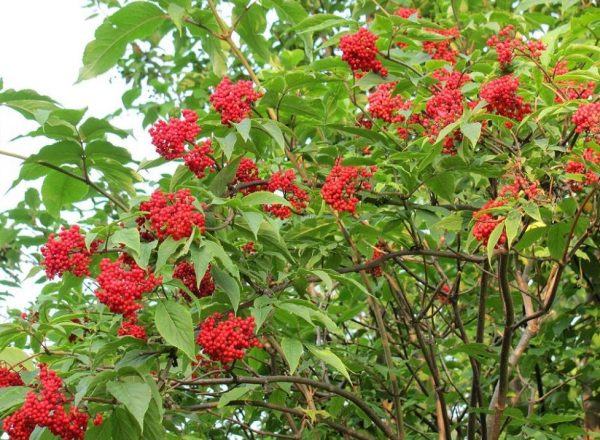
This is what red elderberry looks like
The shrub blooms in May simultaneously with the appearance of leaves. Leaves are imparipinnate with 5-7 leaflets, each 5-10 cm long and 2-4 cm wide, pointed at the apex and drawn into pointed up to 1 cm long, serrate along the edge, bright green above, glabrous, lighter below, along the veins sometimes pubescent.

In the photo there is a red elderberry
The flowers of the elderberry are at first light yellow, then they seem to fade, lighten, taking on a yellowish-white, sometimes cream color. They are collected in terminal dense ovoid panicles 3-6 cm long and stand out faintly against the background of foliage. Flowering lasts about two weeks. Then green fruits set, and the bush does not stand out against the background of the general summer greenery.
But by the end of July, the beauty of this type of elderberry returns again, and the fiery red fruits become noticeable. The branches bend under their weight. The fruits decorate the plant for 1-1.5 months, until the birds, for whom it is a tasty food, “harvest” the crop. At this time, yellow leaves are already appearing inside the crown of the bush. In autumn, after the first frost, the leaves fall off without having time to completely change color.
Where does red elderberry grow?
Elderberry reproduces well by seeds, which are carried everywhere by birds. It grows quickly, forming abundant growth at the root collar. In culture it is used for single and group plantings and for decorating slopes. It is very resistant to climatic conditions, but loves deep and loose fertile soils and is responsive to fertilizers.
Large thickets of elderberry are found in pine forests near cities where rooks nest. Here the plant’s reaction to natural fertilizer in bird droppings is especially visible. And the elderberry itself enriches the soil, since its leaves contain a significant amount of ash substances.
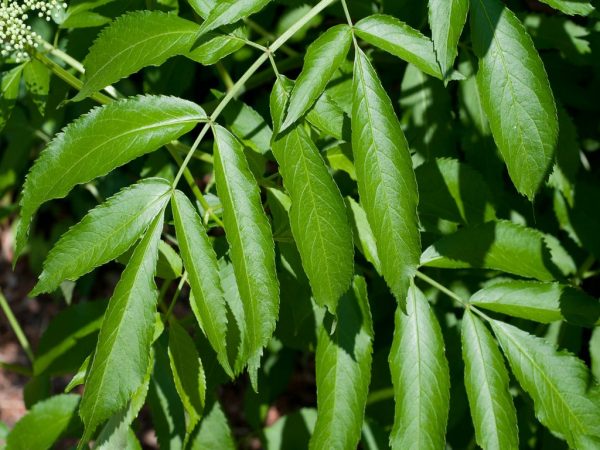
The photo shows red elderberry leaves
Elderberry has been known in culture since the end of the 16th century. During this time, many decorative forms were selected during seed propagation. Among them, a form of plumosis is known with unevenly toothed leaves that acquire a purple color at the time of leaf fall. In gardens there are bushes with deeply dissected leaves, the lobes of which resemble threads; this is a form of laciniata. There are forms with purple buds and pinkish flowers. The flavescens form is distinguished by yellow fruits.
Description of black elderberry
Black elderberry is very different from red elderberry. Shrub or tree with much larger compound leaves (up to 32 cm in length). The buds are pointed. Blooms after complete leafing.It is especially decorative during the flowering period, when it is completely covered with white umbrella-shaped inflorescences up to 20 cm in diameter. A distinctive feature of this species is that the leaves smell unpleasant when rubbed, but the flowers are fragrant. Blooms in late May-early June.
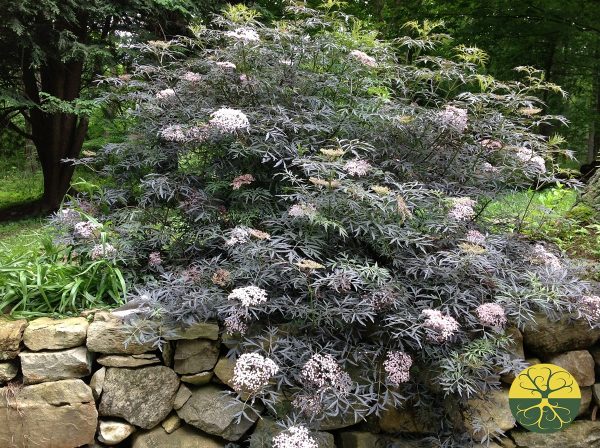
Pictured is the black elderberry Sambucus nigra ‘Black Lace
Shiny black fruits 5-8 mm in diameter with 3-4 seeds ripen in September and decorate the bush for a long time even after the leaves have fallen. With the onset of winter, it is pecked by birds.
Unlike the red elderberry, whose berries are poisonous, the mature fruits of its black relative are edible and even have medicinal value (diaphoretic, laxative and emetic).
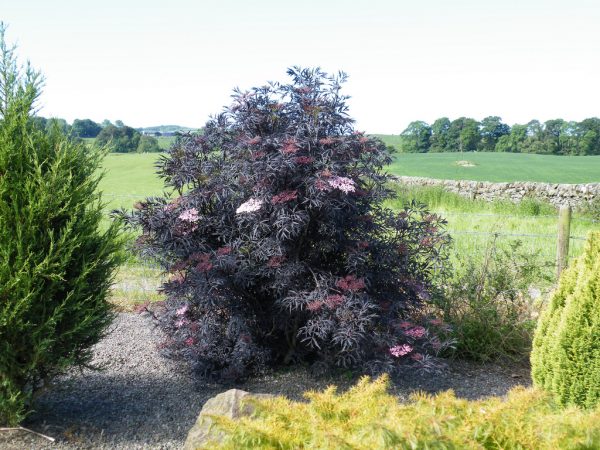
Elderberry Black Lace
Black elderberry grows just as quickly, but is more thermophilic than red elderberry. Tolerates the heat of the southern region well. To the north it becomes more light-loving, there it often freezes over, but with the onset of spring it quickly grows back. It is demanding on the soil and helps improve it.
The pulp of the fruit is tasty, sweetish-sour, and is used to make jam, compotes, jelly, etc.
Black elderberry has been cultivated since ancient times. Widely distributed in parks and suburban areas.
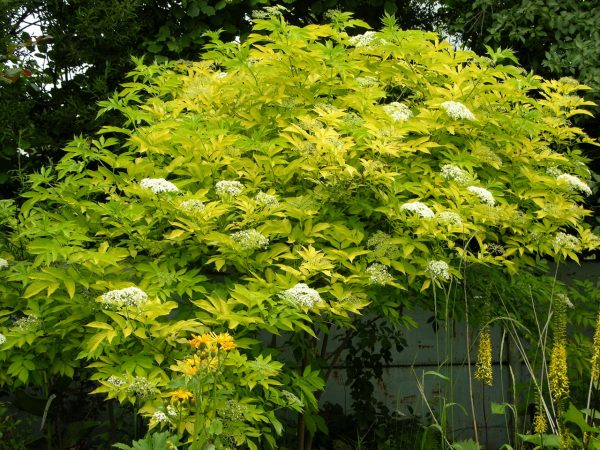
In the photo is Aurea
It has many decorative forms, differing in habit (low-growing, weeping, pyramidal), leaf color, dissection of their leaves and fruit color. Thus, the variegated form has white-variegated leaves; aurea - golden yellow and cherry red fruits; laciniata - regularly and symmetrically deeply dissected leaves; luteo-variegata - yellow speckled leaves; pendula - stands out due to its hanging branches.
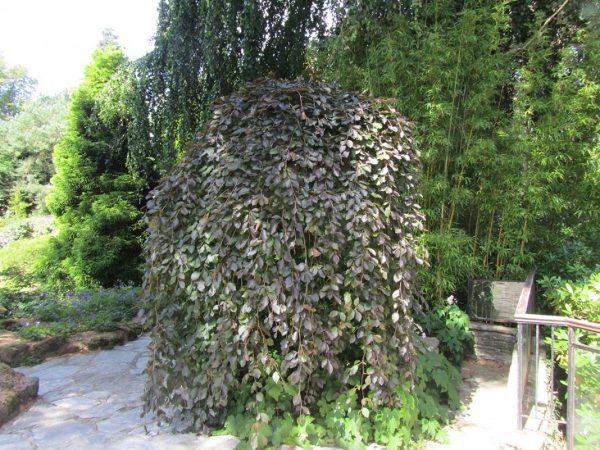
In the photo, black elderberry Pendula
Black elderberry berries are used in folk medicine, but sometimes gardeners complain that despite good, abundant flowering, the bushes do not bear berries. Most often this happens due to improper cultivation of this shrub.
Planting and caring for elderberry
A black elderberry bush planted alone sometimes exhibits such oddities: some inflorescences form ovaries, others set very little or no fruit at all. But the main reason is not the solitude of the bush; it can produce a harvest, albeit a small one.
In order for the plants to produce more fruits, and therefore be better pollinated, you need to plant 2-3 bushes of different shapes: at a distance of 2-2.5 m from one another (black, cluster - wild, Siberian - used in folk medicine).
In some cases, elderberries do not set fruit due to insufficient nutrition. This plant prefers fertile, moist soils and is responsive to fertilizers. 7-8 kg of humus, 50 g of superphosphate, 40 g of potassium sulfate (potassium sulfate) are added to the planting hole. After planting, the seedlings are watered, mulched, and the above-ground part is shortened to 25 cm. This dressing will last the plant for 2-3 years.
Top dressing
Starting from the third year, in the spring they give nitrogen fertilizing (25-30 g of urea) and treat with zircon (1 ampoule per 10 liters of water). In July, the plant is fed with complex fertilizer (cytovit). Treatment with zircon can be repeated after 15-20 days 3-4 times.
In the fall, before the bushes go into winter, the tree trunk circle can be covered with a layer of humus 10 cm thick. You can lay a freshly cut mass of green manure.
Bush formation
The black elderberry is formed in the form of a bush with 10-12 branches of different ages, height 2-2.5 m. Branches older than 6 years are cut into a ring.
If the bush is thickened, prune it: remove old branches, add humus (a bucket), wood ash (0.5-liter jar), and complex mineral fertilizers under the bush. Water it regularly: at least twice a month, and in hot, dry summers - once every 10 days. The greatest need for water is after flowering and during the filling of berries.
Black elderberry bears fruit on last year's branches. Therefore, this year it should grow new annual branches. To do this, in early spring, shorten the tops of the shoots by a bud directed outward, and the side branches by 2-3 buds.
Every year it is necessary to carry out sanitary pruning: cut out dry, improperly growing shoots directed inside the crown of the bush.
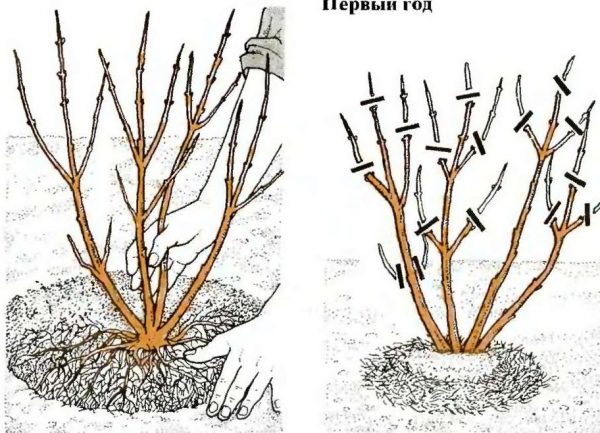
Trimming scheme
Perhaps the weather interfered with pollination: strong winds, rains. In such conditions, pollinating insects do not fly.
You can use the natural stimulator of flowering and fruit formation Bud. It contains gibberellic acids, which promote fruit set.
Spray elderberry bushes with it in the morning or evening in dry, windless weather. The leaves are moistened evenly.
To prepare a working solution, the required amount of the drug (10 g per 10 liters of water) is dissolved in a small amount of water, mixed thoroughly, then added with water to 10 liters, mixed again. It begins to act from the moment of treatment and continues for 1-3 months.
Elderberry
Canadian elderberry is close to black elderberry. Originally from North America, it has large feathery leaves, yellowish-white flowers, fragrant, small, collected in large (up to 30 cm in diameter) umbrellas. The fruits are spherical, dark purple, shiny, about 5 mm in diameter, edible.The shoots are bare at first green, then dark purple, slightly ribbed, with numerous lentils.
The Canadian elderberry has many decorative garden forms with different dissection and coloring of the leaves, with different fruits, even red ones. The most common form is acutifolia with heavily dissected leaves. It freezes slightly every year, but blooms and bears fruit.
In cultivation, all types of elderberry are usually propagated by seeds, sowing them in the fall. For sowing in spring, long-term stratification is required (4 months). 1000 pieces of red elderberry seeds weigh 2.5 g, and black elderberry - 3.3 g. Canadian elderberry forms root suckers. Decorative forms of elderberry, when grown from seeds, partially retain the characteristics of the mother plant. They can also be propagated by woody cuttings.
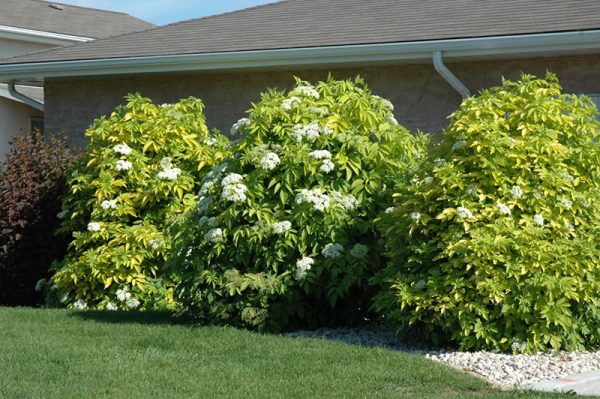
This is what Canadian elderberry looks like
Did you know that the distinctive feature of this shrub is not only the decorative effect of the plants themselves and its many forms?
Many gardeners have long noticed that there are no plant pests around the red elderberry, and they try to give this shrub a place on the site, propagating it with seeds, layering, and cuttings.
When growing elderberries, keep in mind that the inflorescences and bark contain valeric acid, which explains the love of cats for it, gnawing the bark and often feasting on the flowers of this beautiful and healthy shrub.
Photo of elderberry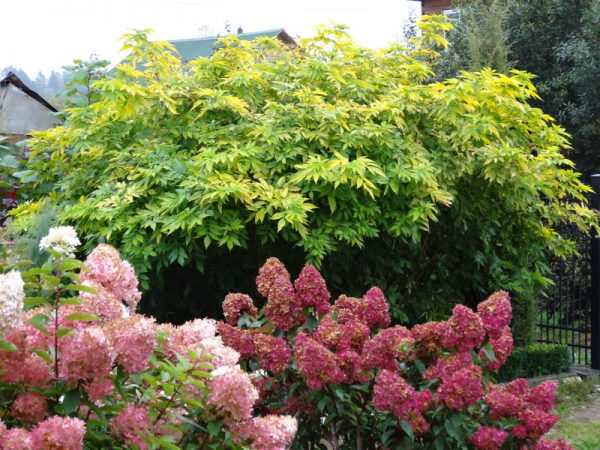
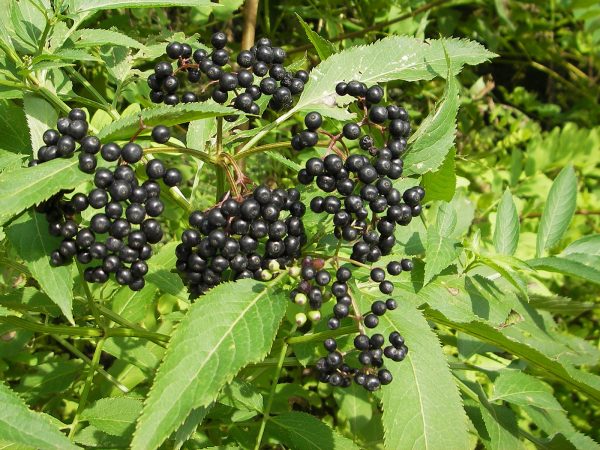
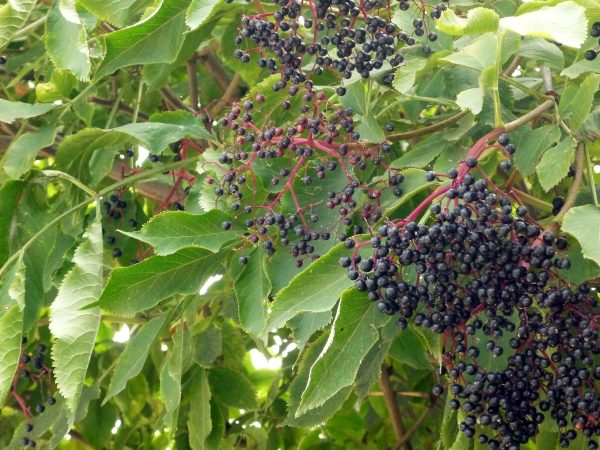
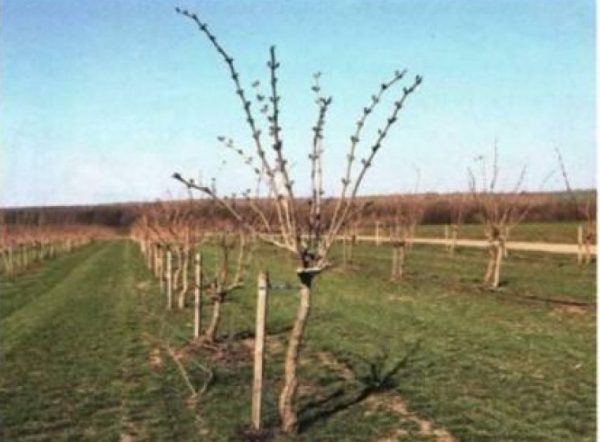
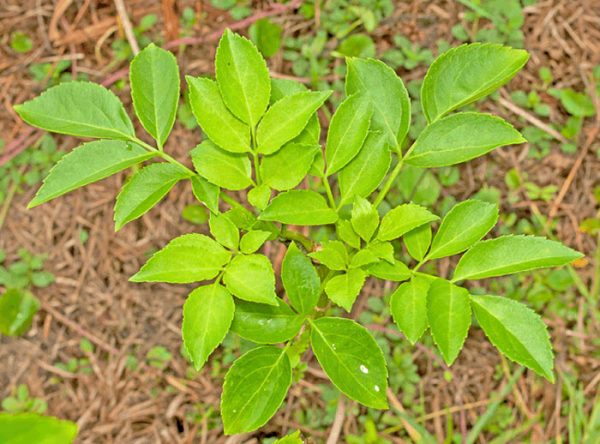
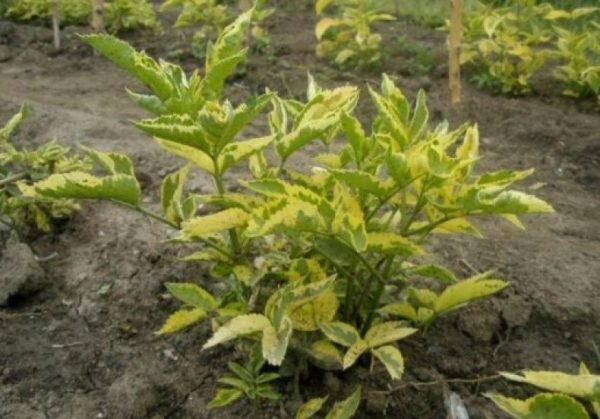
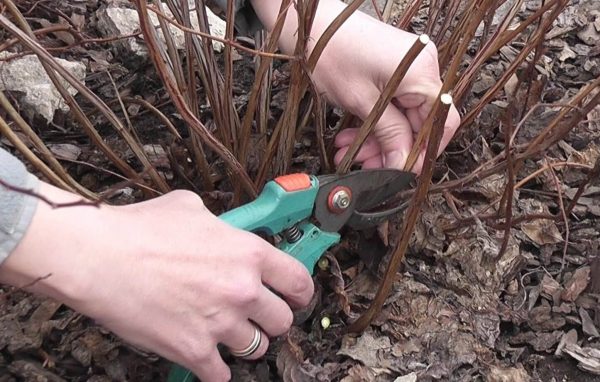
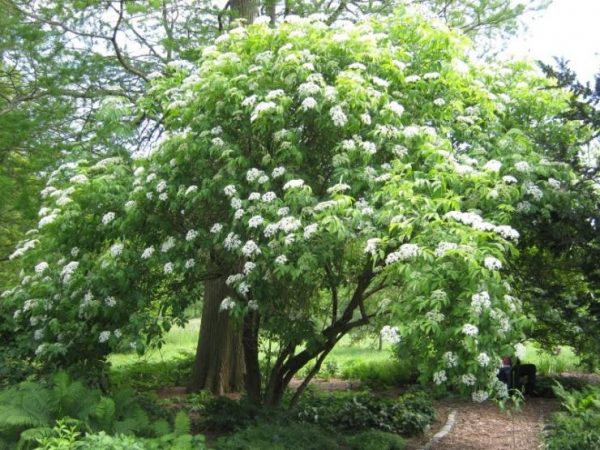
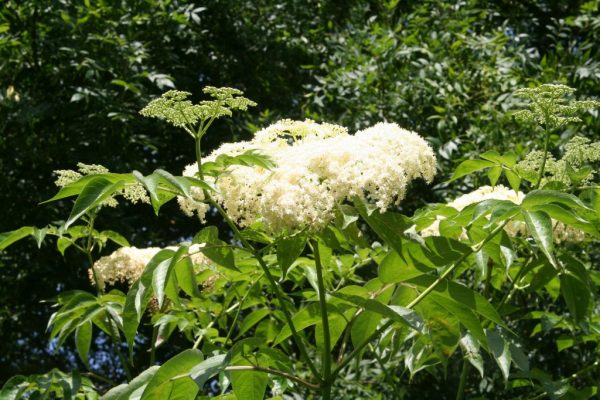
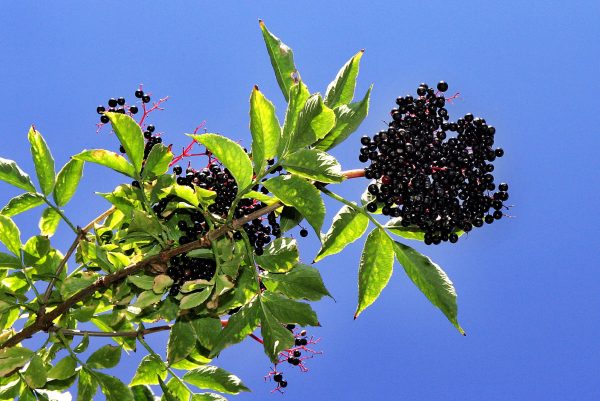
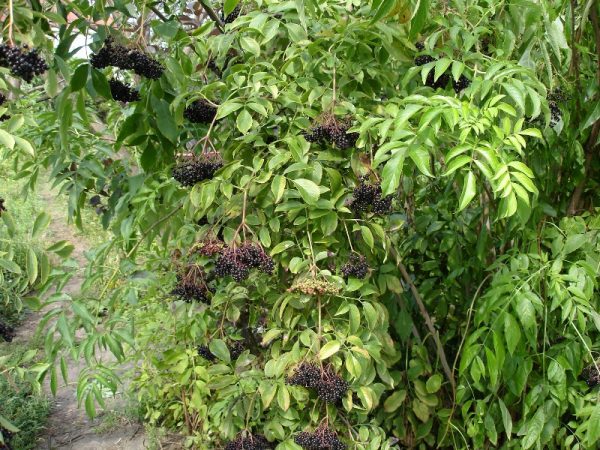
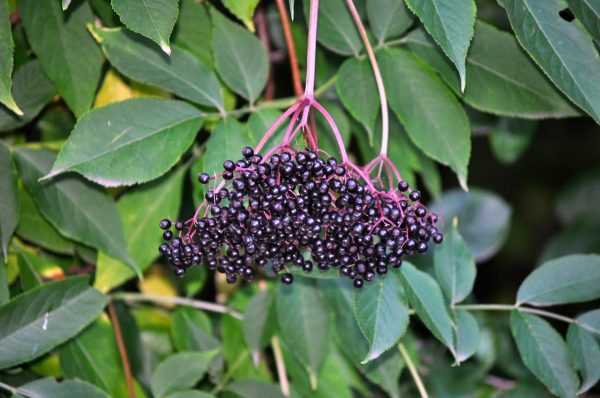
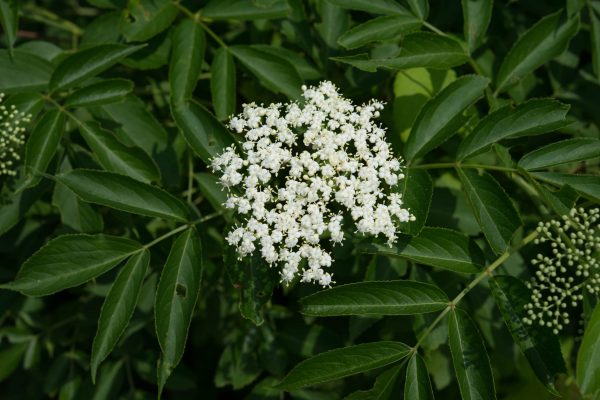
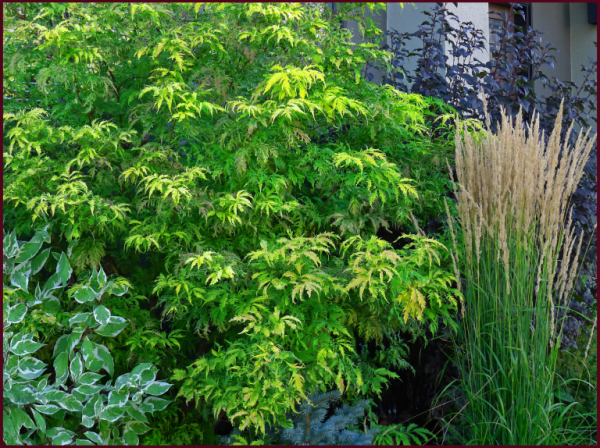
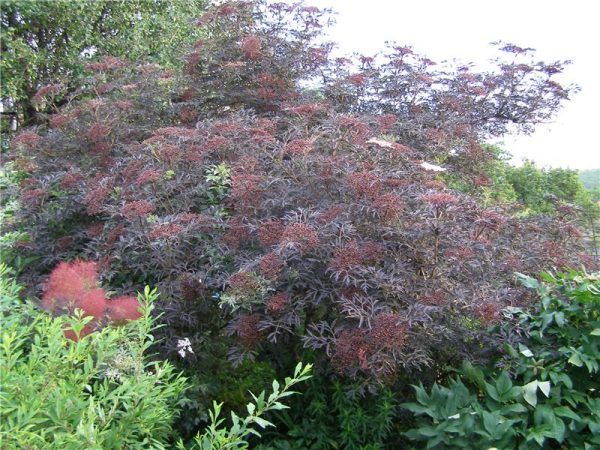


 CUCUMBERS NEVER GET SICK, I'VE BEEN USING ONLY THIS FOR 40 YEARS! I SHARE A SECRET WITH YOU, CUCUMBERS ARE LIKE THE PICTURE!
CUCUMBERS NEVER GET SICK, I'VE BEEN USING ONLY THIS FOR 40 YEARS! I SHARE A SECRET WITH YOU, CUCUMBERS ARE LIKE THE PICTURE! You can dig a bucket of potatoes from each bush. Do you think these are fairy tales? Watch the video
You can dig a bucket of potatoes from each bush. Do you think these are fairy tales? Watch the video
 How our fellow gardeners work in Korea. There is a lot to learn and just fun to watch.
How our fellow gardeners work in Korea. There is a lot to learn and just fun to watch. Eye trainer. The author claims that with daily viewing, vision is restored. They don't charge money for views.
Eye trainer. The author claims that with daily viewing, vision is restored. They don't charge money for views. A 3-ingredient cake recipe in 30 minutes is better than Napoleon. Simple and very tasty.
A 3-ingredient cake recipe in 30 minutes is better than Napoleon. Simple and very tasty. Therapeutic exercises for cervical osteochondrosis. A complete set of exercises.
Therapeutic exercises for cervical osteochondrosis. A complete set of exercises. Which indoor plants match your zodiac sign?
Which indoor plants match your zodiac sign? What about them? Excursion to German dachas.
What about them? Excursion to German dachas.